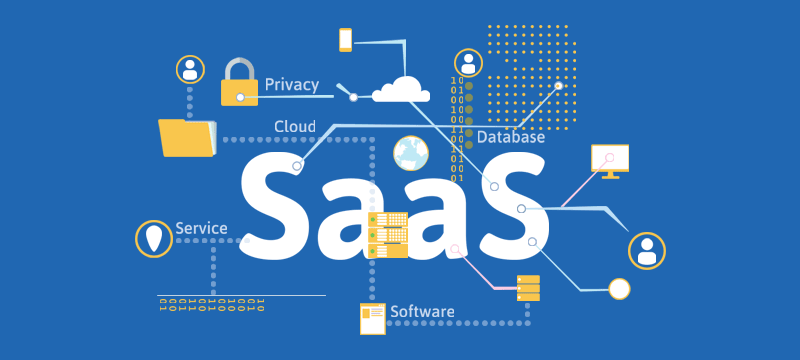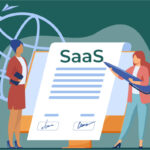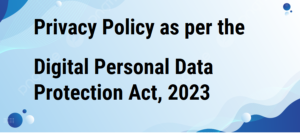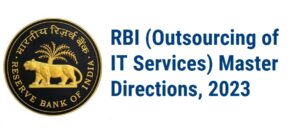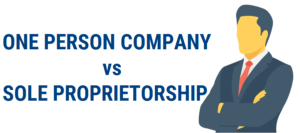Page Contents
- SAAS Products: An Introduction
- How is SAAS different from a License Agreement?
- Components of a SAAS Contract
- Difference between a SaaS company and a Software company
- SaaS Business Model and its Benefits
- SAAS Terms and Conditions
- Negotiating a SAAS Contract
- White Label SAAS Agreement
- SAAS products and the Indian market
- Conclusion on Demystifying SaaS Agreements: A Concise Guide
- FAQs on Understanding SaaS Agreements:
SAAS Products: An Introduction
Software as a Service or SaaS is a cloud-based software delivery model that licenses applications on a subscription basis through the internet. It’s one of the three main types of cloud computing, along with platform as a service (PaaS) and infrastructure as a service (IaaS). Unlike traditional software, SaaS products do not require upfront purchases or underlying infrastructure maintenance. A software as a service agreement, or SaaS agreement, specifies the parameters of a software delivery framework. Under this kind of arrangement, users will access software and data via the internet from a central location.
A software as a service (SaaS) agreement may have extensive service components, or it may only provide end customers with access to items that are already available for traditional licensing. With the SaaS approach, data is uploaded into a system and then saved on the cloud, negating the need for extra hardware or software.
In today’s technology industry, SaaS products have become widely prominent. Its features, including cost-effectiveness, greater flexibility, low risk, an increasing mobile workforce, and customers, have led to its widespread adoption across industries such as hospitality, education, healthcare, and wellness. The demand for SaaS products has led to a massive rise in startups dealing in SaaS products.
How is SAAS different from a License Agreement?
A licensing arrangement is not the same as a SaaS deal. A business would normally provide the actual software for usage via a licensing arrangement, usually in exchange for a one-time or ongoing charge. Hardware and software must be installed physically.
Contrarily, with a SaaS deal, clients receive cloud-based access to software and other technologies without exchanging any tangible commodities. End customers will get online access to the relevant items through a SaaS arrangement. Consequently, rather than authorizing product usage as a service, which would allow the licensee to install and execute the software on their own servers, the form of a SaaS agreement concentrates on allowing the use of a product, i.e., offering access to software housed remotely.
Components of a SAAS Contract
SaaS agreements serve a purpose when a business decides to license software rather than purchase it. In contrast to the conventional method, which sold software as a whole to an organization and installed it on servers on their premises, SaaS suppliers grant access to software and other technologies through public, private, or hybrid clouds. Although the nature, structure, and requirements of SaaS contracts are generally similar, the particular services, service level agreements, and obligations might differ depending on the technology or service being provided.
Difference between a SaaS company and a Software company
The main difference between a SaaS company and a software company is that a SaaS product is hosted on a cloud server, while the software is sold in a pre-packaged form. This technology eliminates the need for an end-user license to activate the software and any infrastructure to host the software. Instead, the SaaS company hosts its membership in the form of a subscription. The customer only needs to log into their account and get complete access. Any software company that leases its software through a central, cloud-based system is said to be a SaaS company. The basic distinguishing factor between a mainstream software company and a SaaS based company is the method of delivery.
SaaS Business Model and its Benefits
The SaaS business model is basically a delivery model and is not just about selling software but also being a full-fledged service provider. This involves not just selling the product but also customer retention for the foreseeable future.
SaaS companies can follow a Business to Business (B2B) approach or a Business to Customer (B2C) approach. In the B2B approach, the SaaS company sells its products and services to other companies, helping businesses operate more efficiently and effectively with highly automated technology. The B2C model focuses on individual customers, providing them ease of access to the software and products online, taking into account the exact user requirements.The SaaS business model offers several benefits, including cost-effectiveness, recurring revenue, and ease of maintenance. It also allows companies to optimize their sales, marketing, and customer care services to enhance performance and generate more revenue.For startups and small businesses, the SaaS business model is a cost-effective solution that eliminates the need for prompt customer support and various operating systems and devices. Instead, the product should only support different web browsers.
SAAS Terms and Conditions
A Terms and Conditions document for your SaaS application will help you better manage it while also reducing the reasons why users may file lawsuits against you. It is a legally significant document that every SaaS application should own. Having a Software as a Service (SaaS) Terms and Conditions agreement is crucial, regardless of how long your business has been in operation or if you’re a startup offering your first product.Legal conflicts may have been averted by those who do not have a Terms and Conditions agreement or who do not include the necessary terms.In addition to all the provisions found in regular Terms and Conditions agreements, SaaS terms and conditions agreements may contain additional sections or clauses specific to SaaS agreements. For instance, the majority of terms and conditions agreements include a section on acceptable behaviour on the website or app, copyright laws regarding content usage, and guidelines for suspending or cancelling a user’s account. Information about a SaaS’s licence agreement, reseller agreement, and subscription agreement may also be included in the Terms and Conditions document.
A Service Level Agreement (SLA), which outlines the service level a customer may anticipate, the metrics used to assess it, and the potential remedies in the event that the firm falls short of these expectations, may also be included in some.
Negotiating a SAAS Contract
The topic of SaaS negotiation is seldom explored due to the fact that SaaS providers do not publicly promote their willingness to negotiate SaaS contracts. Instead, they utilise sales techniques to convince SaaS consumers that they’re receiving a fantastic deal, or they brag about pricing transparency on their websites. Negotiations are not limited to multi-year contracts at the corporate level. Small and medium-sized business SaaS purchasers have the option to bargain for specific conditions in their master services agreements, software licence agreements, and service level agreements (SLAs). Software negotiation strategies can be used to get improved support services, warranties, liability restrictions, and other pertinent contractual provisions.
White Label SAAS Agreement
The terms and conditions under which the provider offers the customer Software as a Service (SaaS) are outlined in a white label software agreement. It must to contain the supplier’s liability limitations and disclaimers about the SaaS solution. It also lays out the service level agreement that the supplier has promised to adhere to.
SAAS products and the Indian market
The Indian market is a great avenue for entrepreneurs to create a lucrative source of revenue by developing SaaS products. Indian entrepreneurs have competitive advantages over their global peers as they have access to a wide pool of skilled talent at a relatively lower cost. By 2025, the Indian SaaS market is projected to capture 8-9% of the global market and generate revenue of $30 billion.
The pandemic has also enhanced the need for software and tools that empower businesses by connecting and servicing customers, amidst physical limitations and being located in different parts of the world. SaaS is actively replacing other extraneous software segments like enterprise resource planning (ERP), customer relationship management (CRM), and point-of-sale (POS) systems.
A few examples of Indian SaaS companies include CleverTap, PingSafe, AppSecure, Zoho, WebEngage, Freshworks, Dukaan, and Talview.
Conclusion on Demystifying SaaS Agreements: A Concise Guide
A SaaS agreement is a roadmap for your journey with a cloud-based software service. It outlines the rights and responsibilities of both you (the customer) and the SaaS provider. Covering everything from payment terms and data security to service availability and user access, it ensures a smooth and mutually beneficial relationship.
- SaaS Agreement/Contract/Software as a Service Agreement: These terms are interchangeable, representing the legal document governing your SaaS usage.
- SaaS Agreement Template/Sample/Standard Agreement: These provide a starting point for drafting your agreement, often tailored to specific service types.
- SaaS Terms and Conditions/License Agreement: These define the permitted uses and limitations of the software, often part of the broader agreement.
- Negotiating SaaS Contracts: Don’t be afraid to discuss and adjust terms like pricing, support levels, and termination clauses to fit your needs.
- SaaS Reseller Agreement: This enables you to resell the SaaS service to your own customers under specific conditions.
- SaaS Service Level Agreement (SLA): This sets expectations for service uptime, performance, and support response times.
- SaaS User Agreement/EULA: This outlines the acceptable use of the software for individual users within your organization.
- Types of SaaS Contracts: Different terms might apply depending on your industry, service type, and business model (e.g., B2B, white-label).
- SaaS License Types: These define the scope of your access and usage, such as per user, per feature, or by volume.
- Templates and samples are helpful starting points, but customization is crucial.
- Negotiating terms is often possible, so don’t hesitate to advocate for your interests.
By understanding these key terms and approaching agreements with clarity and awareness, you can navigate the world of SaaS with confidence and secure a contract that benefits both you and your chosen provider.
FAQs on Understanding SaaS Agreements:
- What’s a SaaS Agreement?
A contract outlining service terms, responsibilities, and rights between you and a SaaS provider.
- What do I need in a SaaS Agreement Template?
Essentials like payment terms, data privacy, service levels, warranties, and termination clauses.
- Can I use a Free SaaS Agreement Template?
Use with caution! Consult a lawyer for complex needs or sensitive data.
- Should I negotiate a SaaS Contract?
Yes! Discuss pricing, service levels, and specific needs to get a fair deal.
- What are SaaS Reseller Agreements?
For reselling another company’s SaaS product under your brand.
- What’s a SaaS Service Agreement Template?
Outlines specific service level guarantees and uptime commitments.
- What are B2B SaaS Contract Templates?
Tailored for businesses, addressing data security, compliance, and liability.
- What are SaaS Subscription Agreements?
Focus on payment terms, subscription tiers, and automatic renewals.
- What are Standard SaaS Agreements?
Generic templates, often not suitable for complex situations.
- What are SaaS License Types?
Per user, per feature, or concurrent user models, impacting pricing and access
Disclaimer:
The content of this article is for information purpose only and does not constitute advice or a legal opinion and are personal views of the author. It is based upon relevant law and/or facts available at that point of time and prepared with due accuracy & reliability. Readers are requested to check and refer to relevant provisions of statute, latest judicial pronouncements, circulars, clarifications etc. before acting on the basis of the above write up. The possibility of other views on the subject matter cannot be ruled out. By the use of the said information, you agree that the Author / Treelife is not responsible or liable in any manner for the authenticity, accuracy, completeness, errors or any kind of omissions in this piece of information for any action taken thereof.


